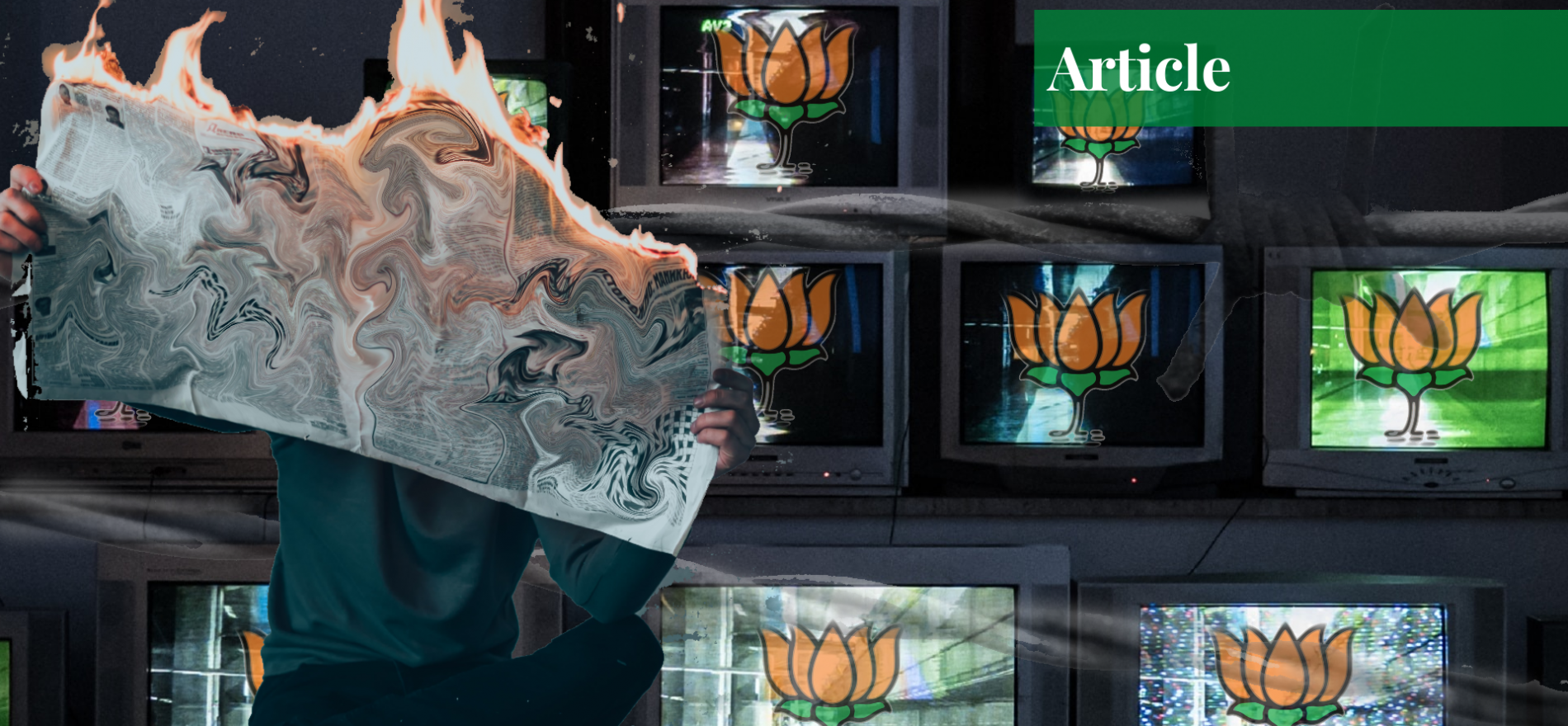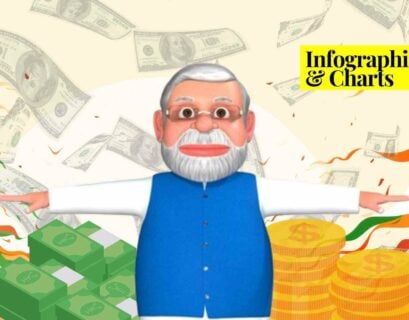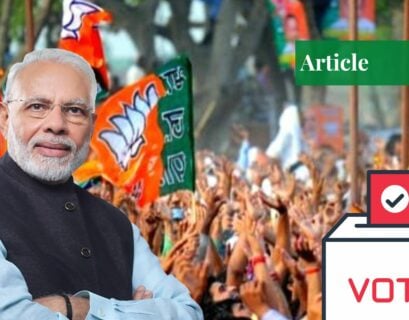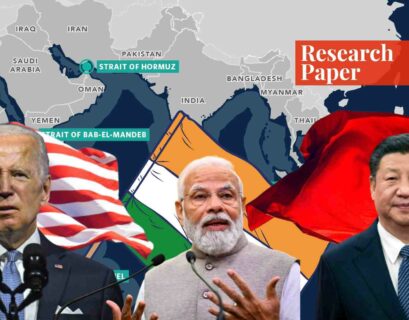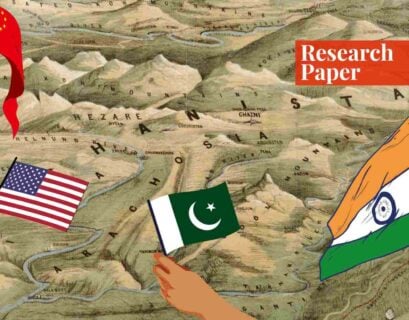Sarmad Ishfaq is an independent researcher and writer whose work has been published by Harvard Kennedy School Review, The Diplomat, Open Democracy, Paradigm Shift, Mondoweiss, and Eurasia Review to name a few. He has also been published by several international peer-reviewed journals such as Taylor and Francis' Social Identities. Before becoming an independent writer, he worked as a research fellow for the Lahore Center for Peace Research. He has a master's degree in International Relations from the University of Wollongong in Dubai where he was recognized as the 'Top Graduate'.
Introduction
Since independence, the Indian media has never been renowned as a paragon of objectivity, however, its current ignominious state is unparalleled. Although the BJP (Bharatiya Janata Party) would want nothing more to conceal the sordid condition of the Indian media, they simply cannot obfuscate this truth. Obnoxiously loud anchors, biased reporting, supercilious anchors, peddling of fake news, politicized networks, jingoism, and biased coverage characterize the personality of India’s media today.
The media’s demise is entangled with the upsurge of the BJP’s controversial Hindutva agenda. Hindutva, an ideology of the BJP and other right-wing groups in India, intends to establish Hindu supremacy in the country. Under this Hindutva rule, Muslims, Christians, and Dalits have suffered massively through hate speech, mob lynchings, and a lack of political representation.
After providing specific examples of the Indian media’s unprofessionalism in recent times, the article goes on to describe exactly how the Indian media became a propaganda tool of the BJP. It deliberates that the BJP employed a carrots and sticks strategy to subdue the media. “Carrots” entails the government favoring those media houses that support its controversial Hindutva alignment and other actions.
Such conglomerates and journalists have been rewarded with more government ads (thus revenue), bribes, and even greater celebrity. “Sticks” conversely encompasses the government’s campaign to threaten and silence any objective voice in the Indian media. This could be through threats and even violence from BJP trolls; cessation of government advertisements; and/or the removal of editors due to government pressure etcetera.
Unprofessionalism of the Indian Media
Whitewashing Modi and Favoring the BJP
In 2002, riots broke out in Gujarat, which led to the deaths of over a thousand people most of whom were Muslims. Modi, who was then Gujarat’s Chief Minister, was accused of being complicit in ordering the violence. It was indeed shocking then that the once internationally reviled Modi would become Prime Minister in 2014. This spectacular rise to power was no miracle however. In reality, Modi’s ascent was fuelled by the machinations of the Indian media who whitewashed his detrimental image from the public discourse.
Before the 2014 elections, many pro-BJP Indian investors expanded their shares in the media market – this allowed a secure platform for Modi’s campaign. For example, India’s richest man, Mukesh Ambani, (owner of Reliance Industries Ltd.), started investing in the media sector around a decade ago – in 2014, he bought Network 18 (one of India’s largest media houses) for almost three-quarters of a billion dollars.
Ambani, like other prominent businessmen, is close to Modi and helped him get elected (Network 18’s channels became pro-BJP and orders were passed not to criticize Modi). Modi was exceedingly highlighted in a favorable light; he was identified as bringing economic prosperity to Gujarat while his past sins were buried. His exposure on the Indian media during this time was staggering. Due to large sections of the media, “openly batting for him”, Modi benefited immensely.
During the peak of the 2014 election, between March 1 and May 11, Modi received more airtime on a sample of English and Hindi news channels during the 8 pm – 10 pm slot than the next nine top leaders combined. Modi received 3415 minutes of airtime, while 2nd place was massively behind with only 879 minutes. The BJP in its entirety also received overwhelmingly positive press and was mentioned exceptionally more than the Congress party. This signaled a prolific pro-BJP shift in the Indian media which has burgeoned even more since Modi took office. Paralleling the Hindutva leader, the Indian media today is characterized by nationalistic overtones in its reporting and coverage.
Biased Reporting of the Kashmir Crisis
Since the BJP government came into power, human rights abuses in J&K have skyrocketed. From July 2016 to February 2017, more than 90 civilians were killed and over 15,000 were injured due to the use of pellet guns by security forces. The Indian security forces systematically oppress and target Kashmiri civilians (blinding and killing many) while the Indian press in their complicity has either suppressed the violence that befalls them or painted the Kashmiris as terrorists.
Characterized by curfews, media blackouts, oppressive military tactics, curtailed freedoms, and rioting in the streets, J&K resembles Gaza and the West Bank while Indian security forces parallel their Israeli counterparts. Unfortunately, however, there is a huge disconnect between what transpires in Kashmir and what is reported. Indian security forces’ atrocities are veiled and so is the Kashmiri freedom movement.
The Indian magazine Caravan reports “…in most mainstream national media, the space given to ground reports on the violence has decreased steadily over time” – this has led to distrust among Kashmiris regarding the media. A Dubai-based journalist covering the Kashmiri unrest stated that Kashmiris living in the Indian-administered region consider the Indian media as Delhi’s “public relations machine”.
He further stated that the huge pro-independence demonstrations in Kashmir have largely gone unreported in India. This demonstrates how the Indian media has transformed itself into a veritable arm of the BJP government. Even Kashmir’s local media was targeted for reporting the ground realities. After the killing of Burhan Wani in 2016, the Kashmiri media was massively censored and harassed.
In July the offices of the two largest newspapers were raided, their printing presses closed down, and their copies confiscated. Thus is the blight of the Kashmiris; they have no voice in India – a democracy that prides itself on its freedom of speech. Veteran Indian journalist, Tavleen Singh, asserts in her book, “Kashmir: A Tragedy of Errors”, that the Indian press was the primary reason why Kashmir’s alienation began. She states, “The national press, out of misguided patriotism, has always chosen to tell the national public less than the whole truth about Kashmir.”
The Washington Post states that too often, the Indian media depicts “Kashmiris as terrorists or human shields, not as a community seeking self-determination.” In fact, the ongoing Kashmiri protests have been repackaged by the Indian propaganda machine as a “Pakistan-backed campaign against India” – this finger-pointing towards Pakistan sells well among Indian audiences.
The truth is that Pakistan has drastically reduced its support for militancy in the Kashmir Valley and this is why the current protests lack characteristics of armed militancy. Due to this, many international commentators characterize the present Kashmiri crisis as “home-grown” – implying that India is solely culpable for the uprising.
Lastly, India’s recent abrogation of Article 370 and 35A (both gave a degree of autonomy to J&K) from its constitution has severely worsened the situation in J&K. The media was again deafeningly silent or siding with the BJP on this gross transgression of Kashmiri’s rights. Since this abrogation, the Modi government has added tens of thousands of more troops to bolster the 500,000 troops already there and has imposed a curfew, which has been ongoing for more than 200 days. Internet and communication have been shut down in the region, and the international media has been barred from entering – India and its media generally present the situation in the valley as idyllic, however.
Lies Peddled Post-Pulwama Attack
The relatively recent Pulwama attack and the subsequent rise in tensions between Pakistan and India gave yet another opportunity to the Indian media to embark upon a jingoistic disinformation campaign. Pakistan was blamed without any investigation immediately after the attack.
Commenting on Pulwama, documentary filmmaker, Sanjay Kak, observes, “Every time an incident like this happens, before the government can respond…the media immediately jumps the gun, asking for war.” Al Jazeera also called out the Indian media’s warmongering after Pulwama stating that the media “descends into unjournalistic ranting.”
In their endeavors to make something stick against Pakistan, the media lied several times. For example, India Today ranted that Abdul Rasheed Ghazi, a Pakistani cleric who had died in 2007, was the mastermind of the attack. The lies proliferated when Indian planes entered Pakistan and attacked an alleged “terrorist compound”.
The Indian government and media claimed to have killed 200-300 terrorists, but Pakistan rejected this stating no one had died and Indian bombs had only uprooted a few trees. Pakistan’s narrative was corroborated in the coming days by international media outlets such as The New York Times, Washington Post, The Guardian, and Reuters (who had interviewed local residents). Later, independent satellite images further illuminated that the buildings that were allegedly targeted with “1,000-kg’s of Indian bombs” were still standing.
In Pakistan’s aerial response to India’s incursion, the Pakistani Air Force downed two Indian MiGs and captured one pilot, wing commander Abhinandan (now released). To mask this embarrassment, India’s government and media alleged that it also shot down a Pakistani F-16, however, the proof again was lacking.
Pakistani and even Indian air force officers stated that if an F-16 was downed, easily accessible evidence such as wing commander Abhinandan’s radio transmissions, loss of radar blip, and video recording(s) of air-engagement could be provided (but have not). Furthermore, the pictures Indian media outlets such as India Today were displaying of a downed Pakistani F-16 were debunked as an Indian MiG. American officials also later stated that all Pakistani F-16’s were accounted for contradicting the Indian air force, government, and media’s face-saving claims.
The next section details how the BJP used the strategy of carrots and sticks to seize control of the media thus explaining the media’s current state.
BJP’s Carrots & Sticks Gambit
Carrots
Although certain media houses are sympathetic to Modi’s Hindutva goals because their owners agree with the ideology, others are more interested in government bribes or making money by supporting the BJP. It is not entirely the fault of the BJP as the media itself is open to such fraudulent acts. During elections, “paid news” or “advertorials” where channels and newspapers were reportedly demanding cash for the coverage of politicians, became commonplace. Today, many news channels are operated, owned, or invested in by politically influential families.
In India, the primary source of revenue generation for the media is via government advertisements. Sudhir Chaudhary, the editor of Zee News, agreed that the Indian media was too dependent on government advertisements and that no news channel in India was neutral. He noted, “If you are too dependent on government ads you can’t be unbiased because you need advertisements”.
Gurpreet Singh, a columnist, remarked that although the corporate sector’s reliance on government funding has strengthened their nexus with government officials and political parties, this has, concurrently, made newsrooms lose credibility and independence. The BJP has used these adverts in a Machiavellian manner to subdue nonconforming voices or reward pro-Modi networks and anchors. It is no surprise then that India’s most popular (and controversial) anchor, Arnab Goswami, is an ardent supporter of the BJP – he is loud, theatrical, and infamous for not letting his panelists speak.
The government primarily relies on his channel, Republic TV, to promote its Hindutva goals. The channel is frequently accused of being the BJP’s mouthpiece. This accusation is not baseless as when Arnab joined Republic TV, questions arose regarding the channel’s main backers – Rajeev Chandrashekhar, a BJP Upper House MP, and Anupam Kher, a vocal supporter of BJP whose wife is a BJP MP as well.
Republic TV’s pro-BJP leaning brings them a hefty source of government ads and revenue. This has, in turn, made other channels greedy for ratings and money as well. One of India’s largest channels, Times Now, introduced its own iteration of jingoistic, overtly pro-Modi and Congress-bashing content. This domino effect illustrates how the BJP has inculcated a climate where pro-BJP news amounts to more revenue and less harassment. By doing so, they have bought the Indian media. Ironically, Modi himself has criticized the media as “bazaru” (saleable) in the past.
Perhaps the most ineffable indicator of the Indian media’s venality was emblematized via a sting operation by Cobrapost. Cobrapost, one of the last remaining independent news organizations in India, conducted its operations in 2018 against India’s biggest networks. They revealed that many networks were ready to promote Hindutva content and influence coverage for the 2019 elections on their networks for money.
“Acharya Atal” (the undercover Cobrapost employee) offered owners and other senior employees of Indian networks vast amounts of money to implement his three-pronged strategy: initiate with “soft Hindutva”, then attack BJP rivals, lastly begin a no-holds-barred agenda. Interestingly, numerous media houses brazenly told Acharya Atal that they unreservedly agreed with the BJP’s Hindutva agenda and that they would be thrilled to support this cause.
Cobrapost asserted that the media networks were not only prepared to cause communal unrest among Indians but also to tip the electoral results in favor of Modi’s BJP. The biggest name to be stung was Vineet Jain (Times Group’s managing director). In several videotapes, he and his colleague can be seen and heard discussing a proposed deal with Acharya Atal.
The deal comprised of Rs. 500 crores ($70 million) in exchange for executing his three-pronged strategy. The two colleagues negotiated their price and named some big corporate houses, which could aid in laundering money. Apart from Times of India, the sting covered Hindustan Times, India Today, Zee News, ABN etcetera.
The BBC noted that although sting operations are usually controversial, the Indian mainstream media was shockingly inaudible vis-à-vis Cobrapost’s expose. Comprehending the current dire circumstances of the Indian media and their general pro-BJP slant, it is not hard to believe that many higher-ups in the media industry would accept such extravagant bribes.
Sticks
While the majority of the Indian media has become a puppet of the BJP, there are still some objective and dissenting voices. Unfortunately, those who extend such voices are labeled as “Pro-Congress”. Media owners are compelled by the BJP into firing those journalists who condemn the lynching of Muslims and/or those who do not subscribe to its Hindutva ideology.
Since Modi became premier in 2014, verbal and physical attacks have drastically proliferated on reporters. While talking to Reuters, some reporters and anchors mentioned that they have been demonized by Modi’s government, threatened with physical harm, and insulted on social media. For female journalists, it is an even more acrimonious experience in contrast to their male counterparts.
Bloomberg emphasizes that the BJP’s IT Cell regularly propagates rape and death threats to female journalists who frequently deliberate against the BJP. Extremist Hindutva groups have become emboldened under the BJP and so resort to unabashed violence. Editor Gauri Lankesh, a critic of the BJP and its goals, was shockingly murdered outside her house in 2017 by a Hindu fringe group.
Between January 2016 and April 2017, there were seven murders and fifty-four total assaults on journalists, primarily committed by political party leaders/members and police. Reporters Without Borders stated that at least three of the journalists murdered in 2017 were killed in relation to their work. As attacks on journalists ascend so does exemption from crimes due to the politician-police nexus allowing offenders a get-out-of-jail-free card.
Out of 114 assaults on journalists in 2014, only a mere 32 people were arrested. Derogatory terms like “presstitute” – coined by a senior BJP minister – are brazenly used against anyone voicing anti-Modi sentiments. Using sedition laws, the BJP government has often targeted channels and journalists slanted towards the left – “sedition” is punishable by life imprisonment.
Media owners are often approached by the government to exert pressure on the anchors and journalists of the network. Journalist Prasun Bajpai while detailing his exit from the ABP news channel asserts that the government was involved in his departure. He was the host of a popular show called “Master Stroke”. One of the show’s exclusive reports unearthed some BJP transgressions and the rating of this show increased five points higher than average.
This was disconcerting for Modi’s government which quickly took action. The government boycotted the channel and its annual public event. Bajpai says that ABP’s satellite links would mysteriously lose their signals during Master Stroke’s primetime slot. This continued for a while and led to a lack of ratings and ad revenue, which subsequently led to Bajpai’s resignation. He notes that as soon as he resigned the satellite link stabilized and Master Stroke saw an increase in ads once again.
In September 2017, akin to Bajpai, Bobby Ghosh, the editor-in-chief of the Hindustan Times (newspaper), resigned from his position due to BJP pressure. The BJP was displeased by Hindustan Times’ “Hate Tracker” which was an online feature that listed hate crimes throughout the country (which increased since BJP became the ruling party). Ghosh resigned shortly after Narendra Modi met the owner of the Hindustan Times.
Today the Indian media remains muzzled especially when it comes to reporting something that could hurt the BJP. In December 2014, Justice B. H. Loya, who was presiding over a case (of extra-judicial killing) against the BJP’s president, died under mysterious circumstances. This too after an alleged bribe attempt of $15.3 million made to him by the Chief Justice of a High Court for a favorable verdict in the case.
Despite the scandalous nature of this story and its implications for India’s democracy, the Indian mainstream media remained appallingly silent. Instead of a rebuke, many channels floated alternative theories that would shift the blame away from the government. There was also no demand for an inquiry into what transpired from the media or the political firmament.
Conclusion
If there was any hope that the Indian media might show some semblance of a resurgence, it was crushed after the 2019 national elections, which the BJP won convincingly. This victory like the previous one in 2014 was made possible due to the BJP’s control over the Indian media. However, controlling the media so the BJP could win the elections was never the end goal (that was just a means) – the end goal was always to precipitate the Hindutva agenda across all institutions in India.
The sustained upsurge of Hindutva and the demise of the media spells further tragedy for Kashmiris and other Muslims in the country, not to mention non-Hindu minorities. Will India’s media reach a stage where it finally pushes back against the BJP or has it completely crossed the point of no return?
If you want to submit your articles and/or research papers, please check the Submissions page.
